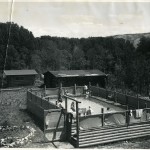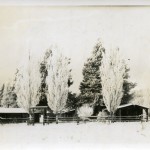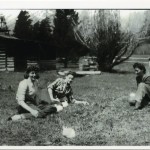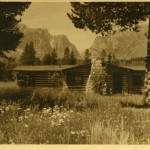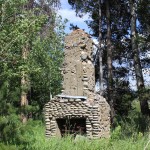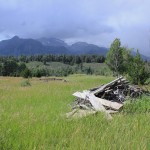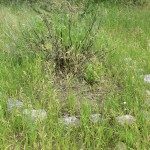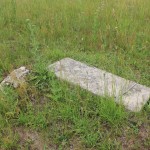The Circle H Ranch was once part of the land that was originally split between homesteaders Louis Joy and William Grant. Joy owned a prosperous dude ranch at the base of Phelps Lake, and held a lot of the land in that area. The JY Dude Ranch (named for Joy) was the first to bring dude ranching into the valley, and soon proved itself to be a lucrative business. Both the Harrisons of the Circle H and the Roesler, Laidlaw and Spears families of the R Lazy S Ranch arrived in the early 1920s on adjacent parcels of land to start their own ranches. As both of these ranches grew, written records would be left detailing how they often shared the same pasture, on lands between the two ranches. The Harrisons chose to open their ranch to dudes, while the R Lazy S remained a private family ranch. According to Dude Ranches Out West, a pamphlet published by the Union Pacific Railroad, Circle H rates were $12/day and seven cabins housed 14 guests in 1927. During this time the Circle H was also a working hay ranch with dairy cows, horses and a vegetable garden.
The Harrisons moved on quickly, selling their ranch just eight years later. Only speculation remains as to their choice, pressures from the nearby and larger JY and White Grass ranches may have edged them out of competition. The Great Depression of 1929 would cause countless more ranches in the valley to close or restrict their business. The Harrisons were fortunate in finding a buyer before the Depression hit, and John Dilworth chose to close the ranch to dudes and operate it only for his family. In 1945, Dilworth sold the ranch to Harry Barker Sr.
Harry Barker Sr. was born January 1, 1891 in Glenrock, Wyoming. He had family ties to Jackson through his first wife, Virginia Simpson (married in 1924). In 1929 they moved to Jackson with their son, Harry Jr. to live with relatives. The young family left their cattle ranch in Thermopolis, WY due to the plummeting cattle market. In Jackson, they looked to move on and Harry Sr. soon operated the O.P. Skaggs grocery store, located where the Wells Fargo Bank is today. Harry Sr. also served in the Wyoming state legislature in 1931, 1933, and 1935. His mother, Adora McGrath, was the first woman senator in the Wyoming Senate.
Harry Barker Jr. and his wife Margaret purchased the Circle H from his father in the 1960s and oversaw the dude ranch operations from that point on. Following family tradition, Harry Jr. also served in the Wyoming House of Representatives and the Wyoming State Senate. He was also president of the Wyoming Game and Fish Commission. By 1955, the Circle H hosted 25 dudes from June 1 to October 15. Rates were $85/week and included a saddle horse. A separate hunting camp was run from September 10 to November 10. The ranch accommodations were sleeping cabins with twin or double beds. Some cabins had private baths, and there was a central bath house on the property. The bath house included five private units with tubs and showers. “Modern” or “rustic” cabins were available, “modern” was considered to include plumbing and/or electricity.
Activities on the ranch included riding, swimming, hiking, climbing and fishing. Hunting was included for dudes arriving in the fall. The Circle H was one of few ranches in the valley to offer a heated swimming pool called the “aqua corral.” The pool was fed by Reserve Creek. Pack trips were arranged with local outfitters who provided “necessary equipment, food, and services.” Cookouts were served family-style in the main lodge and outdoors at a picnic area near the Snake River. The picnic area was located south of the property, and accessed by a road that led down from the ranch. The picnic site was large, flat and regularly used for meals and bonfires. The site was washed out by the Snake River in the 1980s. Three retired schoolteachers each named Betty, and known affectionately as “The Bettys” lived to the north of the ranch, and were great friends of the family.
Despite running a successful ranch, in 1965 the dude operations ceased. In 1966, discussions began with Grand Teton National Park to work out a lifetime lease. This meant that the family could remain on the property until the end of the life of the leaseholder, at which time the property would transfer into GTNP ownership. In 1966, a portion of the property was transferred to GTNP. In 1967, the rest was transferred in a life lease. The terms of the lease were that 8.14 acres were to be allowed for personal use, and this parcel contained the well house (original residence), tack shed (garage), equipment shed (sleeping cabin) and main residence.
In 1970, the sleeping cabins were moved to the new facility up at Colter Bay and remodeled as overnight tourist accommodations. In the early 1980s, the Barkers began spending winters away in Sequim, Washington, and returning to the ranch for the summer. Soon after the Circle H was purchased by GTNP, Harry Jr. bought a ranch near Fremont Butte. The life lease would remain on the Circle H property, through Harry Jr.’s death in 2006, up until Margaret passed away in 2014. Despite so little remaining from the original ranch, the Circle H story illustrates the forgotten small family-run ranches that made their own mark on the landscape and history of Jackson Hole.
Text by Samantha Ford, Director of Historical Research and Outreach

